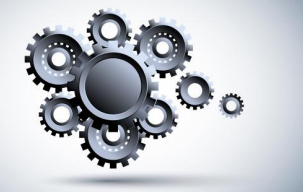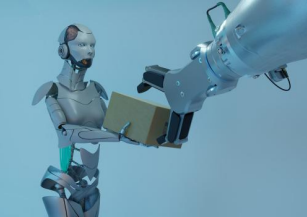Forward-Looking Companies Drive Growth and Innovation in the Gear Sector

business man miniature figure concept move to success business finance and marketing
Author Gear Technology India on June 19, 2023
In a bold move that promises to fuel growth and innovation, the gear industry is receiving a significant boost with a flurry of new investments. Companies across the globe are recognizing the pivotal role that gear technology plays in various sectors, including automotive, aerospace, robotics, and manufacturing.
With a fresh influx of capital, the industry is poised to scale new heights, revolutionize production processes, and pave the way for cutting-edge advancements.
One of the primary drivers behind this recent surge in investments is the growing demand for highly efficient and reliable gear systems. As industries strive to optimize their operations and deliver products of superior quality, the need for advanced gear technology has become paramount.
Manufacturers are keen to develop gears that offer enhanced power transmission, increased durability, and reduced noise levels. These requirements have sparked a wave of research and development activities, which, in turn, have attracted substantial investments.

Market Size and Growth
Based on reports, the valuation of the Global Industrial Gearbox Market was USD 27.01 Billion in 2022 and is expected to reach USD 36.69 Billion by 2030. The market is anticipated to grow at a Compound Annual Growth Rate (CAGR) of 3.90% throughout the forecast period.
Prominent players in the gear industry are seizing this opportune moment to expand their operations and push the boundaries of what is possible.
With the infusion of new capital, companies are investing in state-of-the-art manufacturing facilities, advanced machinery, and cutting-edge technologies.
These advancements not only enhance production capabilities but also enable the development of gears with higher precision, improved performance, and greater energy efficiency.
Furthermore, the rise of automation and robotics in various sectors has created a massive demand for specialized gears. As industrial robots become increasingly sophisticated and intricate, the need for compact and high-precision gears has skyrocketed.

Focus on Energy Efficiency
Gear manufacturers are increasingly focusing on developing energy-efficient gear solutions to reduce power consumption and environmental impact. These efforts align with sustainability goals and regulations aimed at reducing carbon emissions.
Investments in the gear industry are directed towards developing gears that can seamlessly integrate with robotic systems, offering unparalleled reliability and precision in their movements. This synergy between gears and robotics holds tremendous potential for revolutionizing automation in manufacturing, logistics, and other industries.
Another driving force behind the investments in the gear industry is the pursuit of sustainable solutions. As the world grapples with climate change and environmental concerns, companies are embracing sustainable practices and technologies.
The gear sector, too, is playing its part by investing in eco-friendly gear systems that reduce energy consumption and minimize carbon footprints.
By channeling resources into research and development of eco-conscious gears, companies are not only contributing to a greener future but also appealing to an increasingly environmentally conscious market. Moreover, the investments in the gear industry are expected to have a ripple effect on the
broader economy. As companies expand their operations and establish new manufacturing facilities, job opportunities will be created, providing a much-needed boost to local economies. The growth of the gear industry will also foster collaboration among different sectors, as manufacturers partner with research
institutions, universities, and technology companies to drive innovation and accelerate product development. With these recent investments, the gear industry is set to enter a new era of growth and advancement.
The influx of capital combined with a relentless pursuit of innovation, will propel the industry forward and unlock untapped potential. As gears become increasingly integral to numerous sectors, the investments will not only spur economic growth but also revolutionize the way we produce, manufacture, and automate.
Gear Manufacturing Technologies
Innovations in gear manufacturing technologies such as additive manufacturing (3D printing) have expanded the possibilities in gear production. Additive manufacturing enables the creation of complex and customized gear geometries, reduces material waste, and offers faster production cycles.
Conclusion
The gear industry is experiencing a remarkable surge in investments driven by the demand for cutting-edge gear technology, the rise of automation, and a push for sustainable solutions.
With this newfound momentum, companies are investing in advanced manufacturing facilities, machinery, and research and development, setting the stage for groundbreaking advancements.
The impact of these investments will extend beyond the gear industry, shaping the future of multiple sectors and laying the foundation for a more efficient, sustainable, and technologically advanced world.
Post Views: 662




